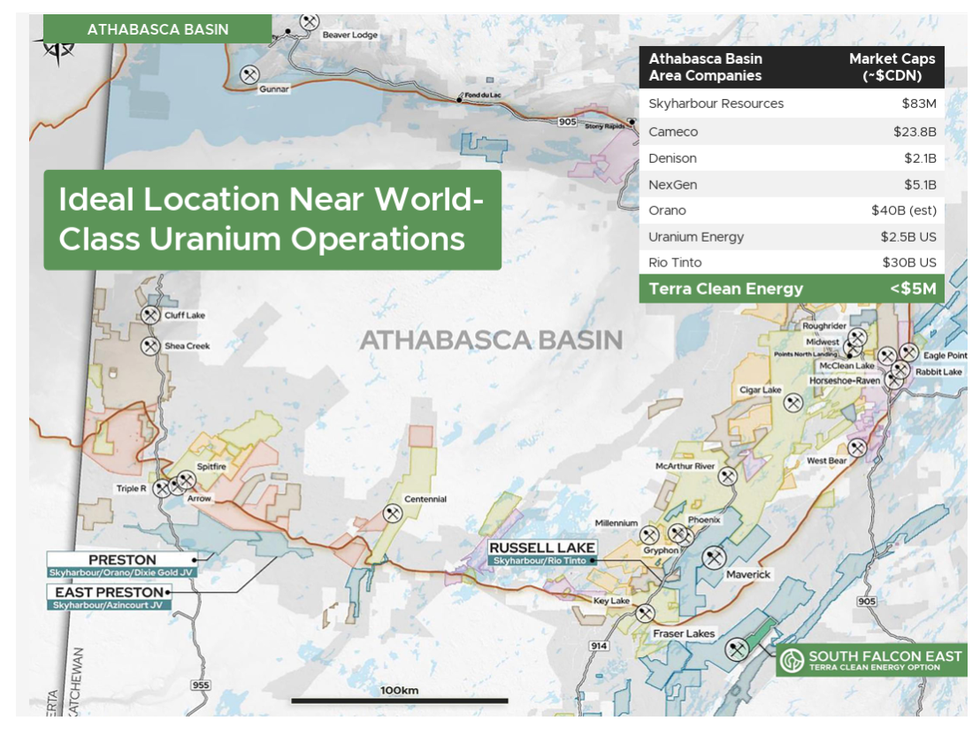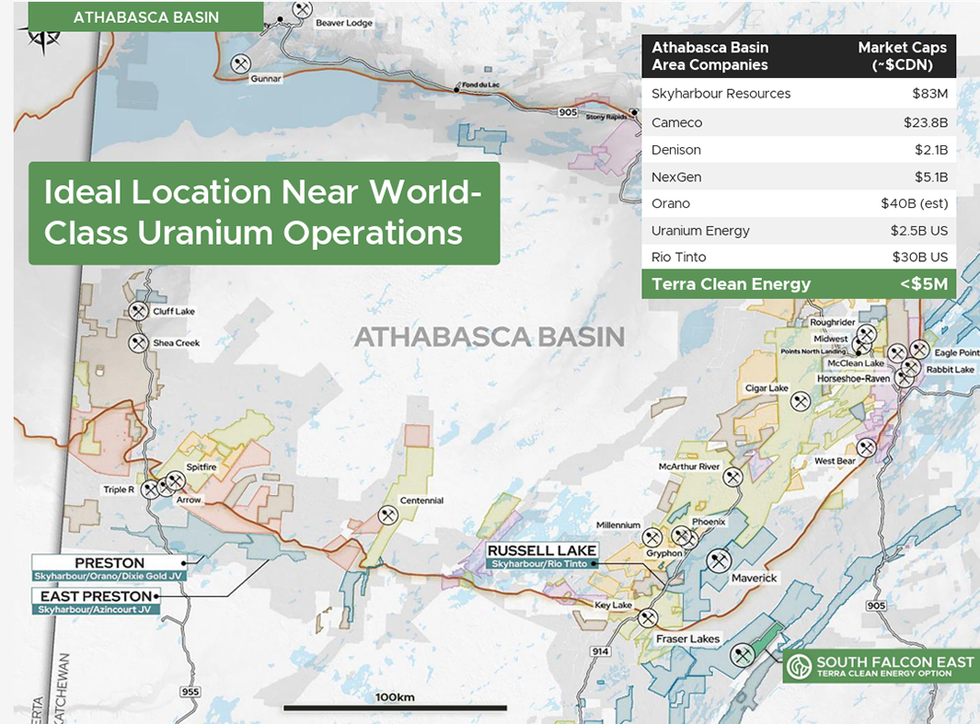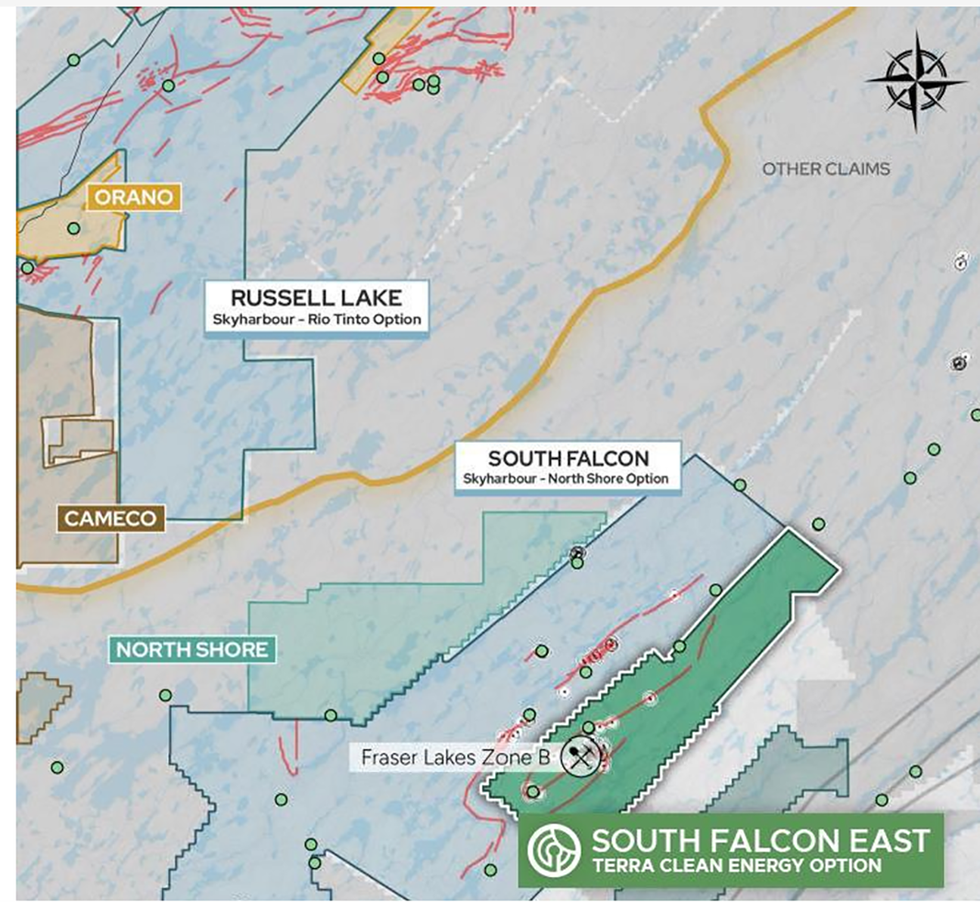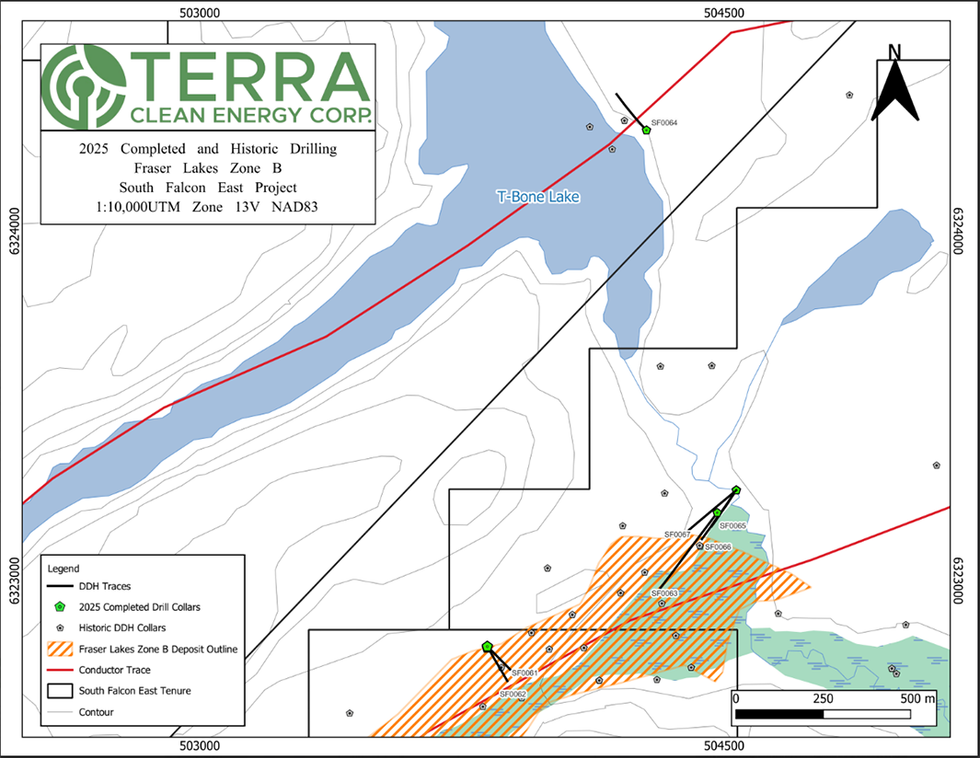Western Uranium & Vanadium Corp. (CSE:WUC) (OTCQX:WSTRF) ("Western" or "Company") would like to provide the following update. Entering 2021, Western is excited about our competitive position, market opportunities, and the prospects for nuclear energy and uranium mining.
Sunday Mine Complex Ready for Production Restart
Western's Sunday Mine Complex project during 2019/2020 established the mines are in "ready-to-produce" status. These permitted and developed conventional mines can be restarted with minimal capital expenditure. The first uranium/vanadium ore production was stockpiled underground and remains ready for delivery when COVID-19 and market conditions permit.
U.S. Nuclear Industry Continues to Perform and Innovate
The nuclear power industry responded to the challenges of COVID-19 as nuclear power generation set performance records and no reactors were shut down by pandemic challenges. The United States made large strides as the Nuclear Regulatory Commission extended reactor operating lives and the Department of Energy ("DOE") championed over 50 domestic developers pursuing advanced nuclear technologies. Promising innovations included advanced nuclear power reactors, small modular reactors, microreactors, a versatile test reactor, accident tolerant fuels, and byproduct production of hydrogen. The Advanced Reactor Demonstration Program awarded over $200 million to 10 teams for development, demonstration, and construction of new reactor designs. While COVID-19 had society in lockdowns, the nuclear industry was ramping up baseload power production and progressing toward its next generation.
Global Uranium Supply Imbalance Continues to Grow
The pandemic had the opposite impact on uranium mining, the source of nuclear fuel. COVID-19 caused global supply-side mining disruptions due to mine shutdowns. This led to the lowest uranium production in over a decade, and created a global supply deficit where production was only about 2/3rds of consumption. The world's three largest uranium producers were forced to buy in the spot market to meet contracts, drawing down available spot inventory. Supply will decline further when two mines, that avoided temporary shutdown, permanently close in early 2021. During 2020, COVID-19 significantly decreased uranium supply quantities resulting in an increased uranium spot price above $30 per pound.
Global Uranium Demand Fundamentals Continue to Improve
Globally there are about 50 large-scale nuclear reactors under construction with 15 projected to be put into service in 2021. Most are being built using Russian or Chinese technology. Many are in countries with an urgent need for de-carbonization to improve air quality. China currently has an operating fleet of about 50 nuclear reactors and is targeting the construction of 6 to 8 new large scale reactors each year. The "Electrification of Everything" trend is prominent in the transportation sector. Rapid advancements in battery technology are decreasing costs and increasing driving range such that electric vehicles (EVs) are projected to soon overtake internal combustion engine vehicles. There are currently 20 countries with almost 70 advanced reactor designs under development. This next generation of nuclear power will provide new solutions for countries in energy poverty. These trends highlight increases in electricity consumption and the expansion of nuclear energy production which will increase global nuclear fuel requirements.
U.S. Government Secures Domestic Nuclear Fuel Cycle
During the past four years, the U.S. government focused on market distortions caused by foreign state-owned enterprises and the economic and geopolitical influence lost by allowing Russia and China to take the lead in nuclear power. In support of the world's largest nuclear reactor fleet, the U.S. has begun implementing the recommendations of the Nuclear Fuel Working Group and has extended the Russian Suspension Agreement. The national strategic uranium reserve was signed into law to stabilize the U.S. nuclear fuel cycle by supporting front-end domestic uranium mining. The DOE is establishing program guidelines to initiate 2021 purchases of $75 million of domestic uranium. The U.S. government pursued the goals of energy independence, solidifying critical minerals supply chains, and national security. This increased domestically sourced nuclear fuel requirements.
Clean Energy Future Enhanced By New Nuclear Capabilities
The Biden Administration's "Plan to Build a Modern Sustainable Infrastructure and an Equitable Clean Energy Future" emphasizes climate change solutions. The Biden team has stated it will immediately rejoin the Paris Climate Accord and has made campaign promises of pursuing investments in clean energy, creating jobs producing clean electric power, and achieving carbon-pollution free energy in electricity generation by 2035. The existing U.S. nuclear reactor fleet currently produces in excess of 50% of U.S. clean energy, and new advanced nuclear technologies promise to generate additional clean energy. The announced infrastructure spending for a post-pandemic recovery will provide a major boost to clean energy and the nuclear industry will be a beneficiary. We expect a reversal of the Trump Administration's energy policies that allowed fossil fuel power plants to undersell clean energy generation. Going forward we expect utilities to be compensated for generating carbon-free power. The increase in nuclear power generation will increase nuclear fuel requirements of the domestic nuclear reactor fleet.
Conclusion
In a world that is bullish on commodities with a multitude of catalysts supporting nuclear power and increasing nuclear fuel requirements but constrained by uranium supply limitations, our expectation is for a strong 2021 with momentum increasing in the years to come as new nuclear technologies are deployed. Western remains positioned to quickly restart production once profitable opportunities to do so become available in this growing market.
A bout Western Uranium & Vanadium Corp.
Western Uranium & Vanadium Corp. is a Colorado based uranium and vanadium conventional mining company focused on low cost near-term production of uranium and vanadium in the western United States, and development and application of kinetic separation.
Cautionary Note Regarding Forward-Looking Information: Certain information contained in this news release constitutes "forward-looking information" or a "forward-looking statements" within the meaning of applicable securities laws (collectively, "forward-looking statements"). Statements of that nature include statements relating to, or that are dependent upon: the Company's expectations, estimates and projections regarding exploration and production plans and results; the timing of planned activities; whether the Company can raise any additional funds required to implement its plans; whether regulatory or analogous requirements can be satisfied to permit planned activities; and more generally to the Company's business, and the economic and political environment applicable to its operations, assets and plans. All such forward-looking statements are subject to important risk factors and uncertainties, many of which are beyond the Company's ability to control or predict. Please refer to the Company's most recent Management's Discussion and Analysis, as well as its other filings at www.sec.gov and/or www.sedar.com , for a more detailed review of those risk factors. Readers are cautioned not to place undue reliance on the Company's forward-looking statements, and that these statements are made as of the date hereof. While the Company may do so, it does not undertake any obligation to update these forward-looking statements at any particular time, except as and to the extent required under applicable laws and regulations.
FOR ADDITIONAL INFORMATION, PLEASE CONTACT :
George Glasier
President and CEO
970-864-2125
gglasier@western-uranium.com
Robert Klein
Chief Financial Officer
908-872-7686
rklein@western-uranium.com












